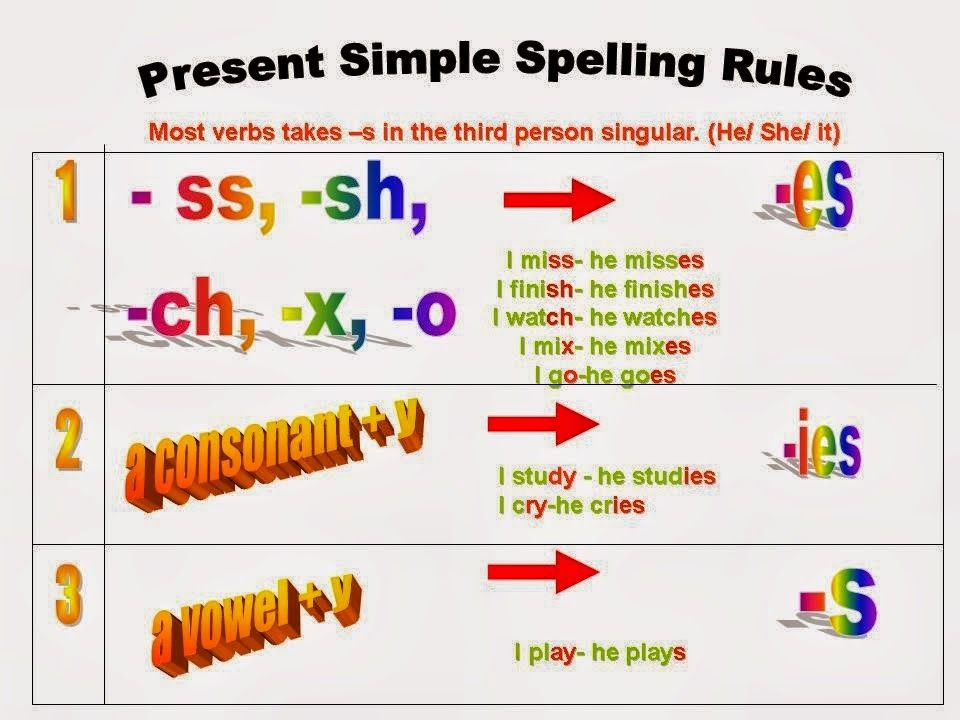The Present Simple
HeyGen Introduction Video
Content
BASIC STRUCTURE
The basic structure is: Subject + base verb
Example: “I (subject) jump (base verb) high“
Be aware that you need to add “s”, “es“, or “ies” to the base form of the verb when the subject is in the third person singular (he, she, it).
Examples:
“I eat pasta” -> “She eats pasta”
“I finish school at 2:40 pm” -> “He finishes school at 2:40 pm”
“I study hard” -> “She studies hard”
The rules for the Present Simple are summarized in the next image:

USES
- Present Simple for Habits and Routines:
- I walk to school every day.
- She drinks coffee every morning.
- Present Simple for Facts and General Truths:
- Water boils at 100°C.
- The sun rises in the east.
- Present Simple for Scheduled Events:
- The train leaves at 9 AM.
- The movie starts at 7 PM.
Practical Examples:
- “I study English every evening.” (habit)
- “Dogs bark.” (general truth)
- “The bus arrives at 8:30 AM.” (scheduled event)
FORMS
Keep in mind that there are also specific forms of this tense, which will be explained next:
- Affirmative Form:
- Structure: Subject + base form of the verb
- Examples:
He plays football.
She works at the bank.
- Negative Form:
- Structure: Subject + do/does not + base verb
- Examples:
He does not play football.
I do not like spinach
- Interrogative Form:
- Structure: Do/Does + subject + base verb?
- Examples:
Does she work here?
Do you play the guitar?
Practical Examples:
- “I watch TV on Sundays.”(affirmative)
- “I don’t watch TV on weekdays.” (negative)
- “Does he watch TV often?” (interrogative)
Here is a video that summarizes the main aspects of this particular verb tense:
Practice Zone
Explanation of review activities
